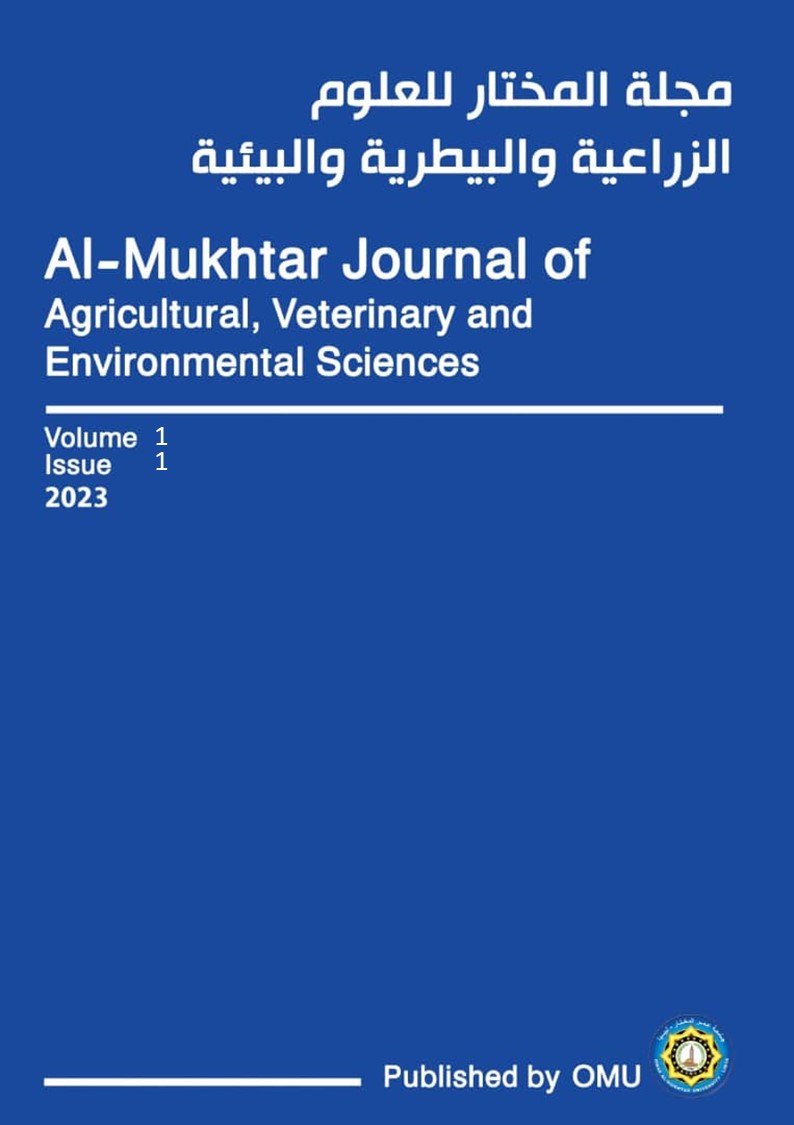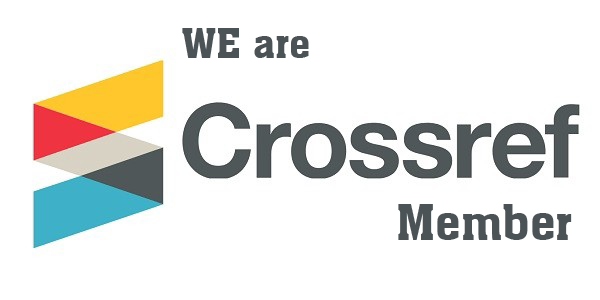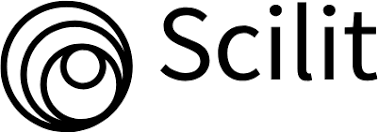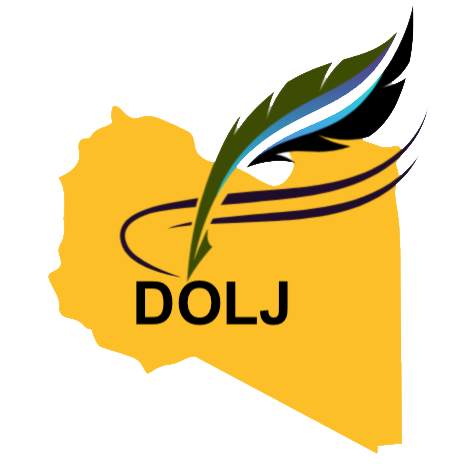Libyan local pigeon: Preliminary description of meat characteristics
DOI:
https://doi.org/10.54172/9zaehk57Keywords:
Pigeon, Meat, CarcassAbstract
Pigeon is one of the potential alternative poultry species for meat production. Meat characteristics of Libyan local pigeon have not been previously described. The current study aimed to describe the characteristics and chemical composition of Libyan local squab carcasses. The study was conducted on six chicks of Libyan local squab (28 – 40 days old). The birds were deprived of food and water for 12h and weighed (live body weight). The birds were slaughtered and scalded in hot water (85Cº) immediately after bleeding and carcasses were eviscerated and weighed. The mean live body weight and eviscerated carcass weight of birds were 283.38 and 207.81g, respectively. The dressing percentage of squabs was 73.36%; the breast and leg (thigh + drumstick) represent the highest cuts: 34.91% and 5.82% of carcass weight, respectively. Meat to bone ratio in breast, thigh, wing and back cuts was 10.55, 5.49, 3.12 and 3.16, respectively. Squab meat content of moisture, crude protein, crude fat and ash were 67.01, 21.72, 8.78 and 1.19 %, respectively. Based on the results obtained from the present study, Libyan local pigeon meat can be considered as one of the potential alternative poultry meat in the local meat market.
References
Abdel-Azeem, A., Amer, A., Shama, T., & Abbas, W. (2016). Early weaning of pigeon squabs. Egyptian Poultry Science Journal. 36, 205-232.
Abdulla, N. R., Loh, T. C., Foo, H. L., Alshelmani, M. I., & Akit, H. (2019). Influence of dietary ratios of n-6: n-3 fatty acid on gene expression, fatty acid profile in liver and breast muscle tissues, serum lipid profile, and immunoglobulin in broiler chickens. Journal of Applied Poultry Research, 28(2), 454-469.
Akraim F., & Jadallah, L. F. (2021). Libyan local pigeon: Preliminary description of productive and reproductive traits and their variation between winter and summer seasons. Journal of Misurata university for agricultural science. 3, 27-38.
Akraim, F. Alfakhri, M., & BELLAIL, A. (2022). The effect of rosemary (Salvia rosmarinus) sup-plemented diet on reproductive and productive traits of Libyan local pigeon. Slovak J. Anim. Sci. 55, 47-54.
Al-Agouri, S., Alrwab, N., Amgawer, H., Sadaga, G., & Alshelmani, M. I. (2021). Prevalence of coccidia in domestic pigeons (Columba livia domestica Gmelin, 1789) in Benghazi city, Libya. Aceh Journal of Animal Science, 6(2), 52-56.
AOAC. (2000). Official Methods of Analysis, Association of official analytical Chemists, Wash-ington, DC, USA, 17th edition.
Apata E. S., Ibrahim M. K., Lateef A. T., Olutayo O. O., & Isaiah A. O. (2015). Effect of sex on meat quality attributes of pigeon birds (Columbia livia) in Abeokuta metropolis. Interna-tional Journal of Agricultural Sciences and Natural Resources. 2, 19-23.
Bartov, I. & Plavnik, I. (1998). Moderate excess of dietary protein increases breast meat yields of broiler chicks. Poultry Science, 77, 680–688.
Bu, Z., Chang, L., Tang, Q., Song, C., Zhang, R., Fu, S., & Mu, C. (2018). Comparative study of meat quality, conventional nutrition composition and muscle fiber characteristics of White King pigeons between different age and gender. Journal of Food Safety and Quality. 9, 13-18.
Coyne, J. M., Evans R. D., & Berry. D. P. (2019). Dressing percentage and the differential between live weight and carcass weight in cattle are influenced by both genetic and non-genetic fac-tors. J. Anim. Sci. 97, 1501-1512. doi: 10.1093/jas/skz056.
Dal Bosco, A., Castellini, C., & Cardinali, R. (2005). Effect of dietary administration of rosemary extract on the oxidative stability of pigeon meat. Italian Journal of Food Science. 17, 419-428.
Delgado, C. L. (2003). Rising consumption of meat and milk in developing countries has created a new food revolution. J. Nutr. 133, 3907S–3910S.
Elsayed, W. A., Shehab, A. H., Mourad, F.E., El-Nahry, F. I., & Said, A. K. (1980). Biochemical and biological evaluation of pigeon meats: Effect of type, age and sex. Die Nahrung. 24, 821-828.
FAO. 2005. Libyan Arab Jamahiriya nutrition profile – Food and nutrition division. Consulted 18-3-2023 at https://www.fao.org/3/bc665e/bc665e.pdf
Fekete, S., Meleg, I., Hullar, I., & Zoldag, L.(1999). Studies on the Energy Content of Pigeon Feeds II. Determination of the Incorporated Energy. Poultry Science 78, 1763–1767.
Font-i-Furnols, M., Tous, N., Esteve-Garcia, E., & G. Marina. (2012). Do all the consumers accept marbling in the same way? The relationship between eating and visual acceptability of pork with different intramuscular fat content. Meat Science, 91, 448-453.
Ganabadi, S., Mutuviren, S., Hilmi, M.A., Babjee, S. M. A., Yaakub, H., & Fakurazi, S. (2009). Carcass composition of Jungle Fowl in comparison with broilers and indigenous chicken. Asian Journal of Animal Sciences. 3, 13-17.
Gašperlin, L., Polak T., Rajar A., Skvarea, M., & Zlender, B. (2006). Effect of genotype, age at slaughter and sex on chemical composition and sensory profile of rabbit meat. World Rabbit Sci. 14, 157 – 166
Hasan, M. K., A. S. M., Mahbub, M. R., Hasnath, M. A. H. Beg, & Ahmed, T. (2016). Effects of age and live weight on meat yield characteristics of Giribaz squab. International Journal of Animal Resources, 1, 35 – 42.
Jiang, S-G., Pan, N-X., Chen, M-J., Wang, X-Q., Yan, H-C., & Gao, C-Q. (2019). Effects of dietary supplementation with dl-methionine and dl-methionyl-dl-methionine in breeding pigeons on the carcass characteristics, meat quality and antioxidant activity of squabs. Antioxidants., 8, 435. https://doi.org/10.3390/antiox8100435
Khargharia G., Goswami, R. N., & Das, D. (2002). Carcass characteristics of domesticated pigeon squabs of Assam. Indian veterinary journal. 79, 400-401.
Kokoszyński D., Zenon B., Henryka K., Krzyszt K., & Lidia S. (2013). Carcass composition and physicochemical and sensory properties of meat from broiler chickens of different. Journal of Central European Agriculture 14, 781-793.
Liu, Y., Song, G., Yi, G., Hou, Y., Huang, J.,Vazquez-Anon, M., & Knight, C. (2006). Effect of supplementing 2-hydroxy-4-(methylthio) butanoic acid and DL-methionine in corn-soybean-cottonseed meal diets on growth performance and carcass quality of broilers. Asian-Australasian Journal of Animal Sciences. 19, 1197-1205.
Ogunmola, O. O., Taiwo, O. F., & Ayankoso, A. S. (2013). The nutritive value of the meat quality of locally breed chicken, exotic chicken and Turkey. IOSR Journal of Applied Chemistry. 3, 46–50.
Omar, M., Hassan F. M., & Shahin S. E. (2017). Economic assessment of various Levels of protein and energy in pigeon squabs diet. Zagazig Veterinary Journal. 45, 20-30.
Omojola, A. B. (2007). Carcass and organoleptic characteristics of duck meat as influenced by breed and sex. Inter. J. Poul. Sci., 6, 329-334.
Omojola, A. B., Isa M. A., Jibir M., Ajewole B. T., Garba S., Kassim, O. R., Omotoso, A. B., Adeyemo, O. A., & 1Akinleye S. B. (2012). Carcass characteristics and meat attributes of pigeon (Columbia Livia) as influenced by strain and sex. J. Anim. Sci. Adv. 2, 475-480.
Parkhurst, R. C. & Mountney, J. G. (1988). Poultry and Egg Marketing. In: Poultry Meat and Egg Production. Springer, Boston, MA. https://doi.org/10.1007/978-1-4757-0683-3_10
Pasiakos, S. M., Agarwal, S., Lieberman, H. R., & Fulgoni, V. L. (2015). Sources and amounts of animal, dairy, and plant protein intake of US adults in 2007-2010. Nutrients. 21,7058-69. doi:10.3390/nu7085322
Poławska, E., Cooper, R. G., Jóźwik, A., & Pomianowski, J. (2013) Meat from alternative species – nutritive and dietetic value, and its benefit for human health – a review. CyTA - Journal of Food, 41: 37-42, DOI:10.1080/19476337.2012.680916
Pomianowski J., Mikulski D., Pudyszak K., Cooper R.G., Angowski M., Jóźwik, A., & Horbańczuk J. O. (2009). Chemical composition, cholesterol content, and fatty acid profile of pigeon meat as influenced by meat-type breeds. Poultry science. 88, 1306-1309.
Scanes, C. (2007). The global importance of poultry. Poultry Science, 86,1057-1058.
Downloads
Published
License
Copyright (c) 2023 Fowad AKRAIM, ABDALRASOL SOULTAN (Author)

This work is licensed under a Creative Commons Attribution-NonCommercial 4.0 International License.













